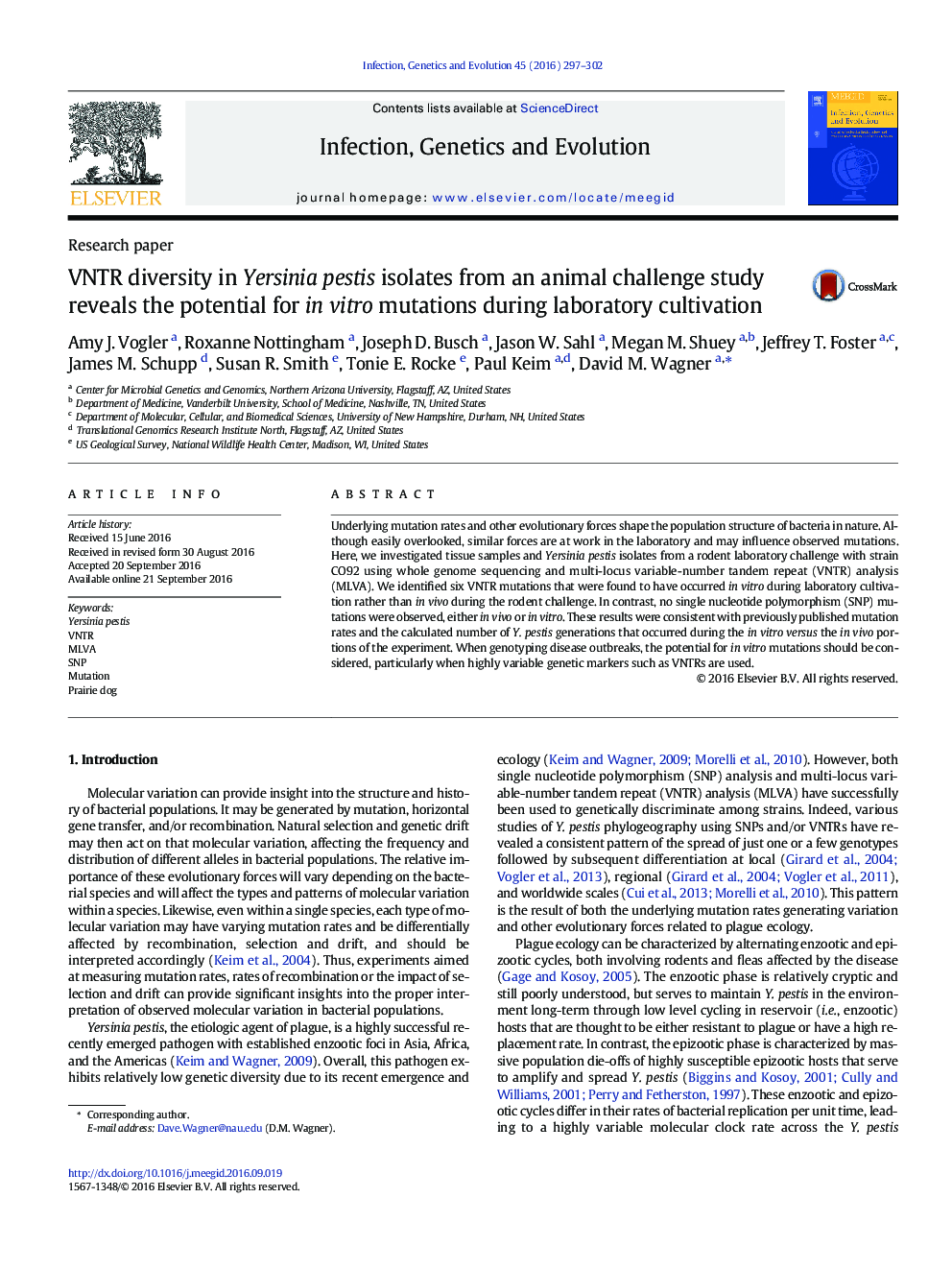| Article ID | Journal | Published Year | Pages | File Type |
|---|---|---|---|---|
| 8647103 | Infection, Genetics and Evolution | 2016 | 6 Pages |
Abstract
Underlying mutation rates and other evolutionary forces shape the population structure of bacteria in nature. Although easily overlooked, similar forces are at work in the laboratory and may influence observed mutations. Here, we investigated tissue samples and Yersinia pestis isolates from a rodent laboratory challenge with strain CO92 using whole genome sequencing and multi-locus variable-number tandem repeat (VNTR) analysis (MLVA). We identified six VNTR mutations that were found to have occurred in vitro during laboratory cultivation rather than in vivo during the rodent challenge. In contrast, no single nucleotide polymorphism (SNP) mutations were observed, either in vivo or in vitro. These results were consistent with previously published mutation rates and the calculated number of Y. pestis generations that occurred during the in vitro versus the in vivo portions of the experiment. When genotyping disease outbreaks, the potential for in vitro mutations should be considered, particularly when highly variable genetic markers such as VNTRs are used.
Related Topics
Life Sciences
Agricultural and Biological Sciences
Ecology, Evolution, Behavior and Systematics
Authors
Amy J. Vogler, Roxanne Nottingham, Joseph D. Busch, Jason W. Sahl, Megan M. Shuey, Jeffrey T. Foster, James M. Schupp, Susan R. Smith, Tonie E. Rocke, Paul Keim, David M. Wagner,
